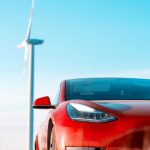Tesla drivers recently saw a confusing shift in their vehicle’s navigation system that caught many by surprise. For those traveling long distances, the updated Navigation feature no longer displayed city or state information for Supercharger stops, instead showing only the business names at each charging point. The revision frustrated owners who were used to referencing city names to plan trips and recognize familiar locations. As criticism mounted across forums and social media, Tesla responded decisively. The rapid response highlighted the direct link between customer feedback and product updates—something that remains a unique part of Tesla’s approach to customer relations.
Other updates to Tesla’s in-car Navigation in the past have typically aimed to add convenience, such as introducing weather radar or mapping out points of interest. However, this recent adjustment drew more backlash than earlier changes, suggesting that Tesla’s driver base values location transparency. When Tesla has altered interface elements before, it has occasionally taken longer to address widespread discontent. This time, the company’s turnaround was noticeably faster than in previous cases, reflecting a growing emphasis on agile customer service and rapid deployment of software fixes.
How Did Tesla’s Navigation Update Affect Drivers?
The removal of city and state details from Supercharger stop names led to confusion, especially during multi-stop journeys where clear identification of locations is critical. Many drivers voiced concerns that the modification made trip planning more difficult, as it was harder to determine exactly where their vehicles would charge. For some, the absence of familiar town names diminished the personal aspect of road trips, making their journeys feel less connected and more uncertain.
How Quickly Did Tesla Respond to the Issue?
Once the feedback reached Tesla, the company moved swiftly to course-correct. Max de Zegher, Director of Supercharging, acknowledged the mistake and announced a rapid rollout of a fix.
“The naming change should have happened at once, instead of in 2 sequential steps. That was a big miss on our end,”
he stated. The software update was pushed to in-car screens and the Tesla App within 24 hours, addressing concerns for most users almost immediately.
What Is Tesla Planning Next for Its Navigation System?
Tesla announced plans to further refine the Navigation experience in December by displaying both the site name and its corresponding common amenity at each Supercharger location. Such improvements aim to satisfy user demand for clarity and usefulness when planning trips.
“We do listen to the community and we do course-correct fast. The accelerated fix rolled out last night,”
de Zegher added, emphasizing the company’s commitment to ongoing enhancements driven by user input.
Lapses in interface usability can lead to notable customer dissatisfaction, especially for brands like Tesla whose offerings rely on seamless user experiences. The incident demonstrates the importance of direct and open communication channels with end users who rely heavily on their vehicles’ navigation systems. Owners of electric vehicles, especially those dependent on brand-specific networks such as Superchargers, require transparent and reliable location data to reduce stress and streamline travel.
Usability and transparency in route planning are essential for electric vehicle drivers who often plan trips around charging stops. Information such as the city, state, and nearby amenities can make a substantial difference in travel comfort. Companies introducing over-the-air updates need to weigh innovative features against the habits and preferences of their user base, considering that minor interface changes can significantly impact daily experiences. Users benefit from providing direct feedback, as this case highlights how swiftly companies might act when issues gain enough visibility. For those relying on EV navigation, double-checking the most recent updates before setting out can save time and confusion.









